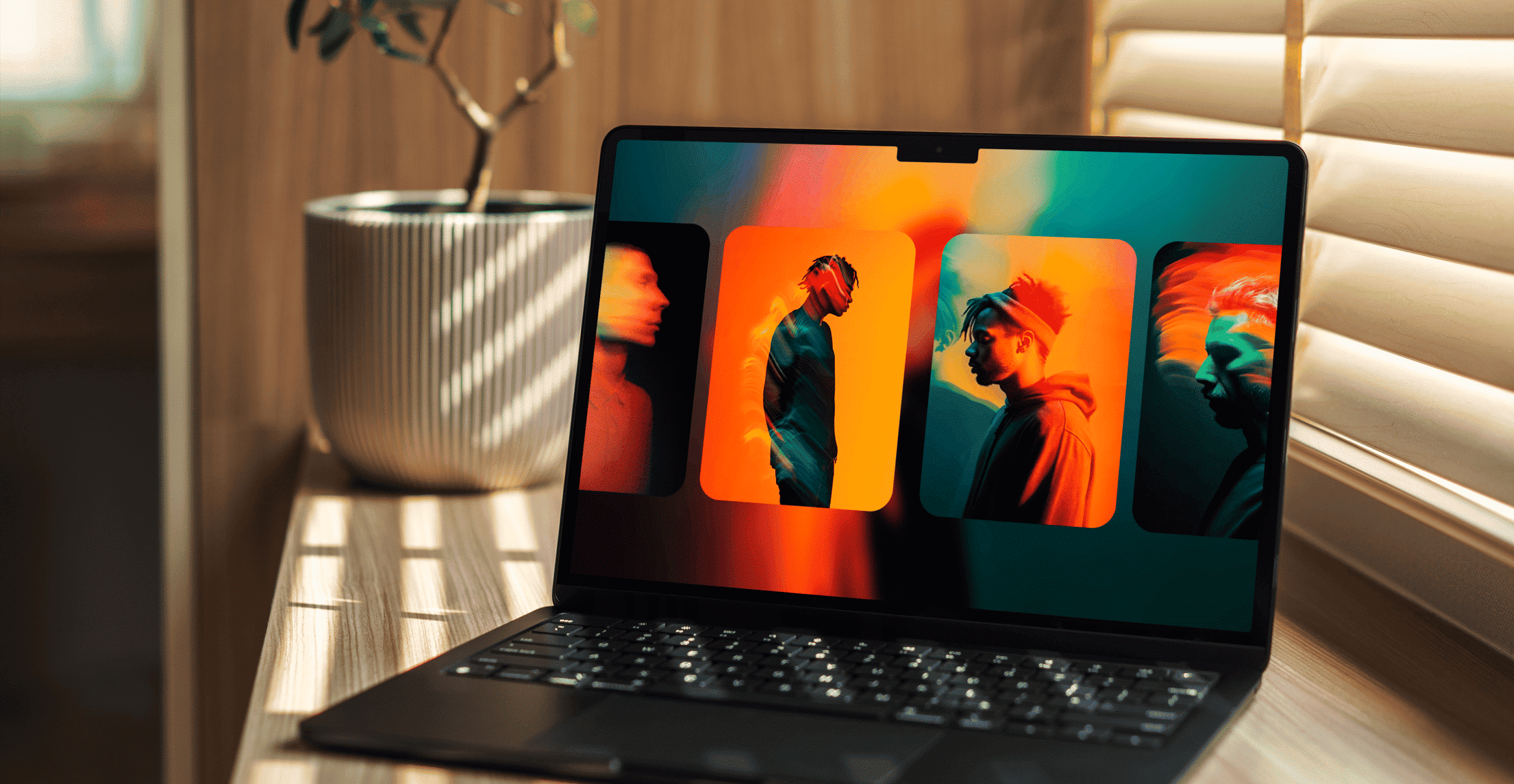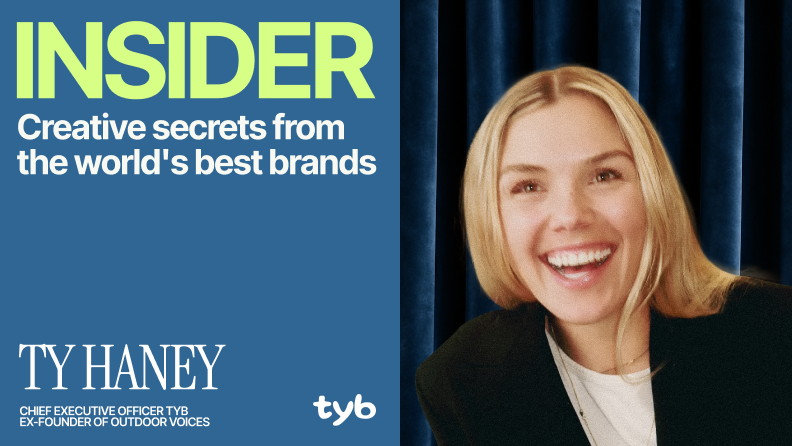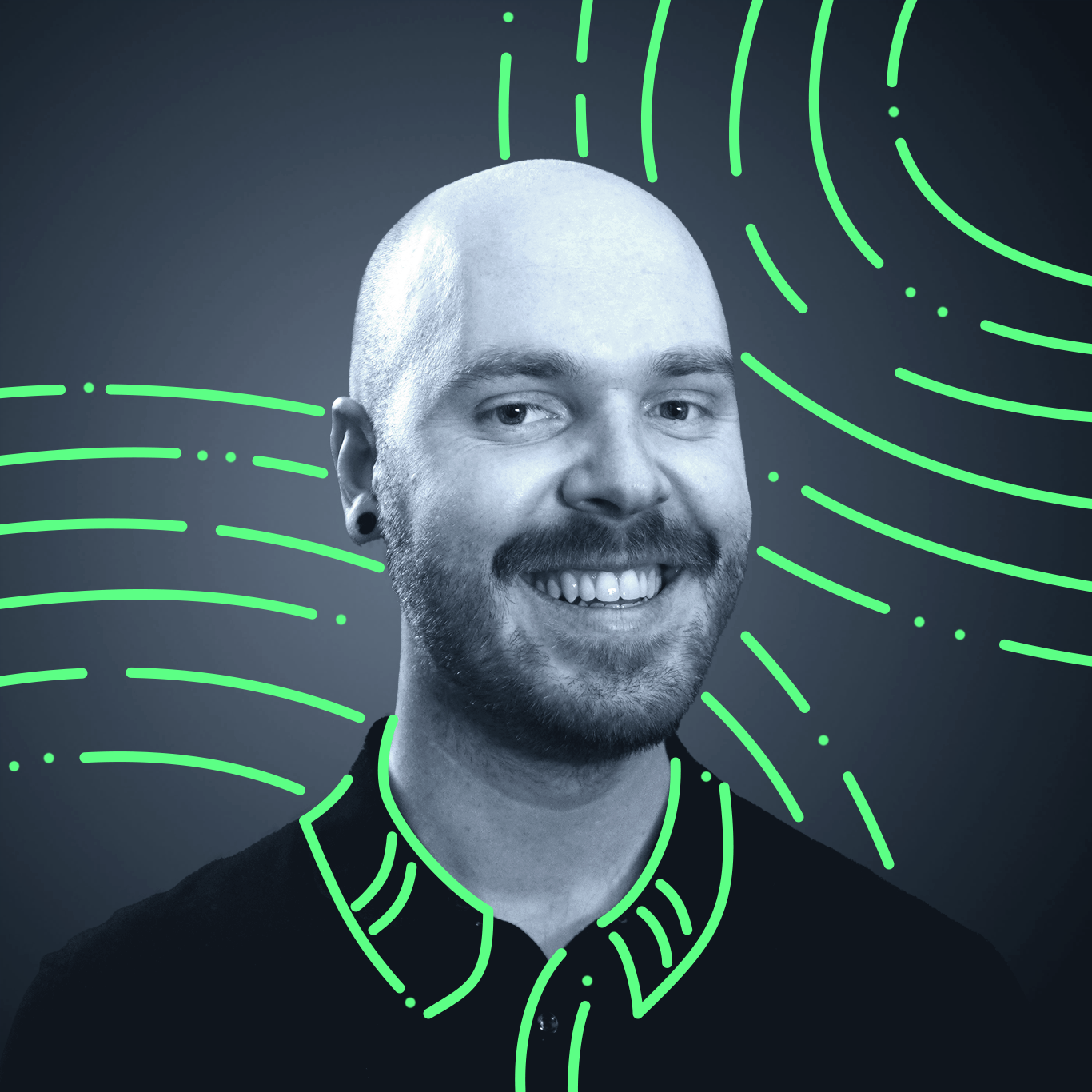Creative Thinkers: Q&A With Adam Morgan, ECD at Adobe

In our very first Creative Thinkers segment we had the pleasure of chatting with Adam Morgan, the award-winning Executive Creative Director at Adobe (yes, that Adobe). For 25 years Adam has been at the forefront of design and leadership. He’s also the author of Sorry Spock, Emotion Drives Business, and host of the Real Creative Leadership podcast.
In our talk with Adam, we dove into the nature of “creativity” and how people can develop their own without succumbing to creative fatigue. We also explored the nature of leadership, and what defines a creative leader. Here’s what Adam had to say:
You have a unique definition of creativity. What is creativity to you?
Adam Morgan: For me, creativity is really the ability to make new connections—meaning you have all these disparate things and you're able to find two things that are alike in some unique way or make something out of different materials. We've all heard “everything's been done before. Everything's just repeating.” And that is certainly true.
I remember in my formative years going through all the ad annuals and finding patterns. A lot of things were repeated. But to me, it's that ability to create new connections that uniquely defines creativity.
When did you discover your creative DNA?
AM: For most people who have creative muscle, they can look back to when they were kids. I know I made up stories and board games and all those kinds of things. But I wouldn't say that's when I knew my creative DNA. Mine happened when I was in college.
I was studying chemical engineering and realized it wasn’t the life I wanted. Then Doug Hall's Jump Start Your Brain helped me break down creative thinking by building those new connections. I ended up turning my focus to advertising, where my whole experience with agencies in the 1990s and 2000s was a very Zen thing. People would just sit around on mats and all of a sudden great ideas would pop out. But, that wasn’t me. I wanted more steps and processes. That's why my creative DNA, I think, is more of that of a central brain thinker. I really feel like it's a combination of science and data, understanding that half of the world.
So it's bringing those two worlds together where I can demystify creativity and help other people get faster at it and better at it on my teams. I think that's my true creative DNA.
"We all have the same human brain. And we all have the potential to be creative."
Do you think everyone has that creative muscle deep down in them and anyone really has the potential to become creative, regardless of their industry?
AM: One hundred percent. It's an interesting thing. I remember being at an IT conference and I was sitting around a table and talking with developers and one guy made the comment, “Yeah, it's a good thing we got you here. The creative type. Because I’m not creative and none of us are, we're just very literal. We just do the code."
It got me thinking that narrative is a social construct. People tell themselves they aren’t creative because when they were kids they weren’t good at arts and crafts. But that’s not true. I’ve talked to a lot of neuroscientists about this. What I’ve learned is that there's no special brain for developers or designers.
We all have the same human brain and we all have the potential to be creative. If you're a data scientist and you find some new discovery of how to find an insight, that's creativity. If you're a business owner in the middle of the pandemic and things aren't going well. So you look at things in a different way and say, “Oh, we have to stop doing this. We have to start doing that.” That's creative.
Like most things, it takes practice.
Everyone's had that feeling of “I don't have any good ideas. I'm running into a wall.” How do you overcome creative fatigue?
AM: I wouldn't say that I don't encounter it, I've just labeled it differently. Most time when you're in the Zen path, you're like, “I'm hitting writer's block or designer's block and I have nothing.” You just get frustrated. Whereas I look at the process and say “I don't have enough inputs.”
I haven’t read enough. I don't have enough fodder so my brain is not able to make connections because I've given it three inputs instead of 300. I don’t get frustrated, instead, I go grab a book, watch something, or do whatever it is on the human condition to fill that well and get more inputs.
When it comes to the fodder that you're talking about, do you consume information differently when it’s for entertainment vs. creative inspiration and ideation?
AM: Yeah, it's different. There is a process where you're just trying to look at stuff from a different perspective. For example, when an author is people watching, they're not just watching for entertainment, they're searching for human truths.
You can't just look at it as entertainment when you're dissecting it all. If you want to be one of those greats, you have to go through the phase where you dissect a ton of information to learn all those little truths. And that is just the process of training, that muscle or creative brain.
You’ve talked about building "creative muscles", is there an equivalent in creativity to a sprain or workout injury?
AM: Absolutely. Think about it. If someone went into this whole thing just organically and didn't really know the process, they will probably hit walls. When they only have one style and suddenly it's not seen as creative anymore, they'll feel like they're in a rut – that muscle is not working. It's broken and they feel like they're not creative.
You just need to stop and realize, “Okay. That one pattern is done. Now, I've got to find new patterns.” I went through a lot of those crappy moments of “I suck, I'm the worst.” I think most creatives go through that monthly. It's the creative rollercoaster. You just have to stay on the ride, try something new, and look at things in a different way.
"Exposure to new fodder is the spice of creativity."
Is it the recognition of these processes that defines a creative leader (as opposed to a creative person)?
AM: Unfortunately, not at all. Creative leaders are often the most senior person, the ones who are the best at the craft. We think that instantly qualifies them to become a creative leader—and it's not. The skills required for creative leadership are not the same skills required for being good at the craft and creativity.
In fact, they're the opposite. I did this presentation on the nine steps to becoming a creative director or creative leader. Ultimately being good at the craft is at the bottom of the list.
Really understanding storytelling, giving direction and guiding the work is just one aspect of it. But, there are so many other bigger things. Are you good at building relationships? Are you good at having a vision? Are you good at rattling the cages? Are you good at managing other people and giving advice, helping them, and having empathy?
I have a saying, “If you want to lead, you need to read.” How many books do you read? How many podcasts do you listen to? Not about the craft, but about leadership.
Through your career spanning 25 years, how have you managed to stay creative day in and day out?
AM: I talked a lot about reading books and about leadership. That certainly helps me stay sharp and learn about how to be a better leader.
But you also still have to have, you have to fill the well, you need that fodder, right? You need to be inspired. You need to feel things. And so for me and my team, I always have a weekly meeting that's just for inspiration, nothing more. Whether we watch a TED Talk, have someone do a book report, or talk about some new, cool thing, or their hobby, great.
Exposure to new fodder is the spice of creativity.
You may also like these
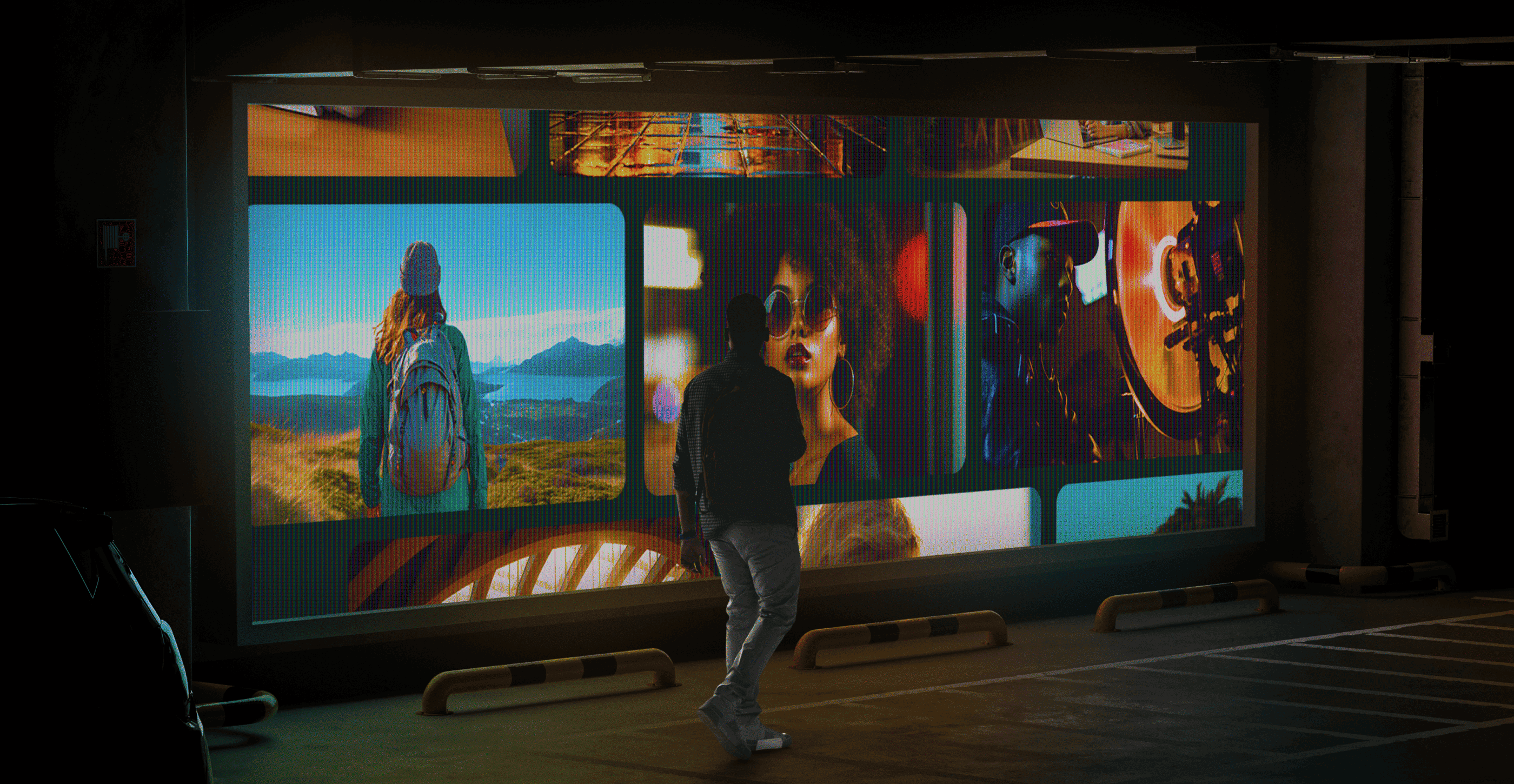
7 top creative support solutions for teams and enterprises
There’s no denying that today’s marketing and creative teams are under more stress than ever. To deliver high-performing, top-quality assets at scale, many teams are getting fewer resources, smaller budgets and tighter deadlines.As an ever-increasing number of brands compete for audience attention, the demand for compelling content is getting higher—and essential for creative teams to meet.It’s no surprise then that in-house marketing and creative teams are turning to advanced creative support solutions to help enhance efficiency, streamline workflows and optimize production processes.From AI-powered design to cloud-based collaboration software and outsourced creative services, these solutions transform how teams work, allowing them to produce more assets faster without compromising quality.Our best advice to teams and enterprises on how to get this right? Make Superside your creative team’s creative team and free up your team to do their best work.
How to find creative partner agencies to boost 2025 strategy
Are your internal creatives battling to keep up as the demand for authentic, trustworthy content grows? For many brands, outsourcing creative makes sound financial sense. Plus, partnering with an experienced creative services team can bring fresh ideas and impressive scalability.80% of customers say that the experience a company provides is just as important as its products or services, meaning that driving great customer experiences is essential in 2025. Once again, creative partnerships pay dividends, as many creative agencies go well beyond KPIs to drive genuine cultural impact and build trust.Unlike traditional agencies, creative partner agencies also typically act as an extension of your team. Work with Superside, for example, and our talented designers will become your creative team’s creative team.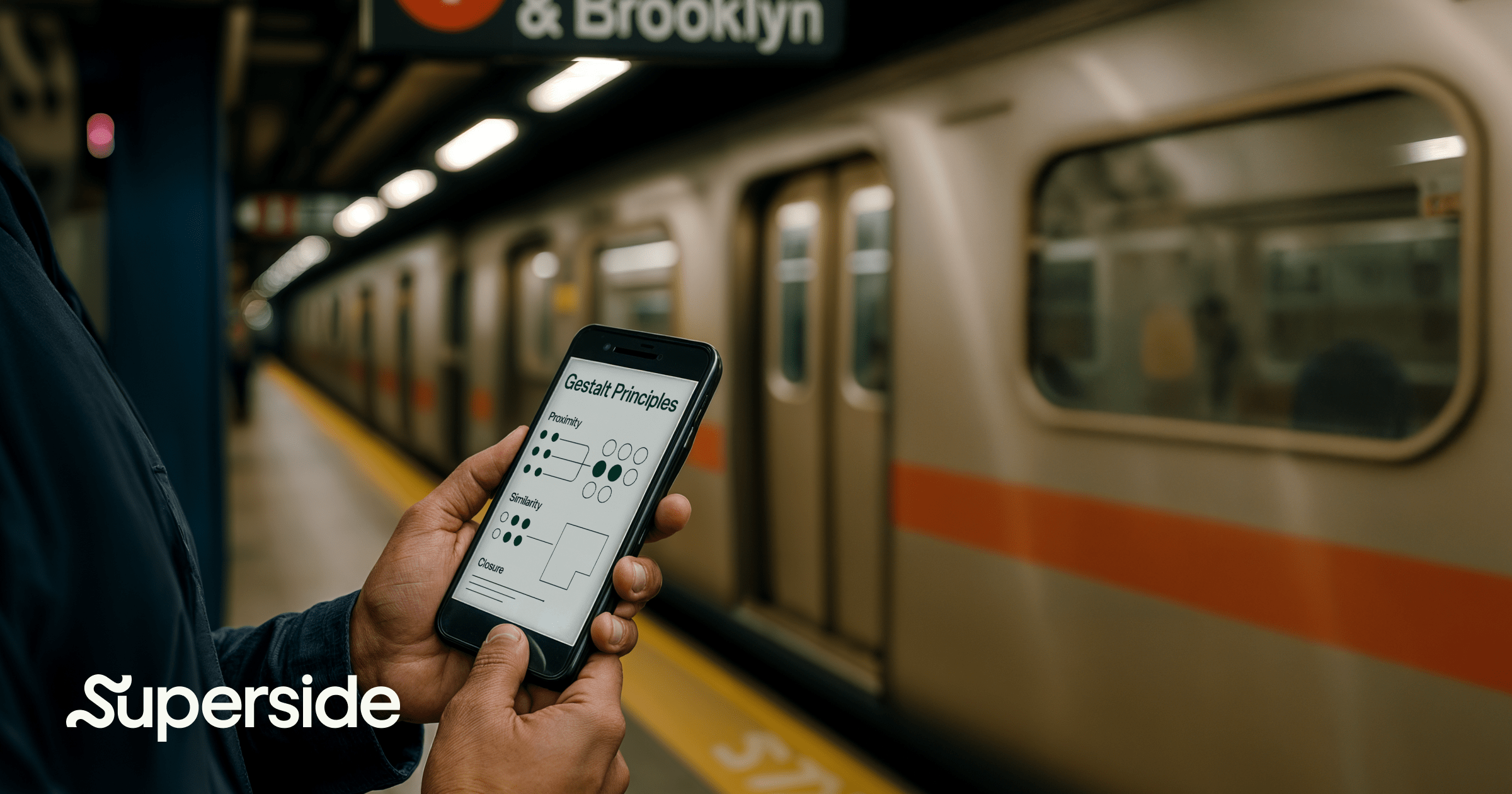
11 Gestalt Principles of Design: A visual guide for design teams
Some designs instantly draw you in, guide your eye and clearly communicate a message. Others leave you lost in a maze of clutter and confusion. The difference isn’t just color palettes or fonts; it’s in the way our brains instinctively organize and interpret what we see.Enter the Gestalt Principles of Design: The hidden psychology that shapes how we recognize patterns, group visual elements and quickly make sense of designs. For designers and marketers, the Gestalt principles is the key to creative that’s clear, compelling and persuasive.Even after a century, these principles remain indispensable. In fact, the ability to organize complex visual information and guide user attention is more critical than ever at a time when immersive experiences, augmented reality (AR) and 3D design become mainstream.Looking for guidance? As the world’s top AI-enabled, global creative partner for enterprises, the Gestalt principles are design basics our designers nailed long ago. Partner with us, or use this guide to find out how to use these design basics to deliver jaw-dropping creative results.What is Gestalt psychology?